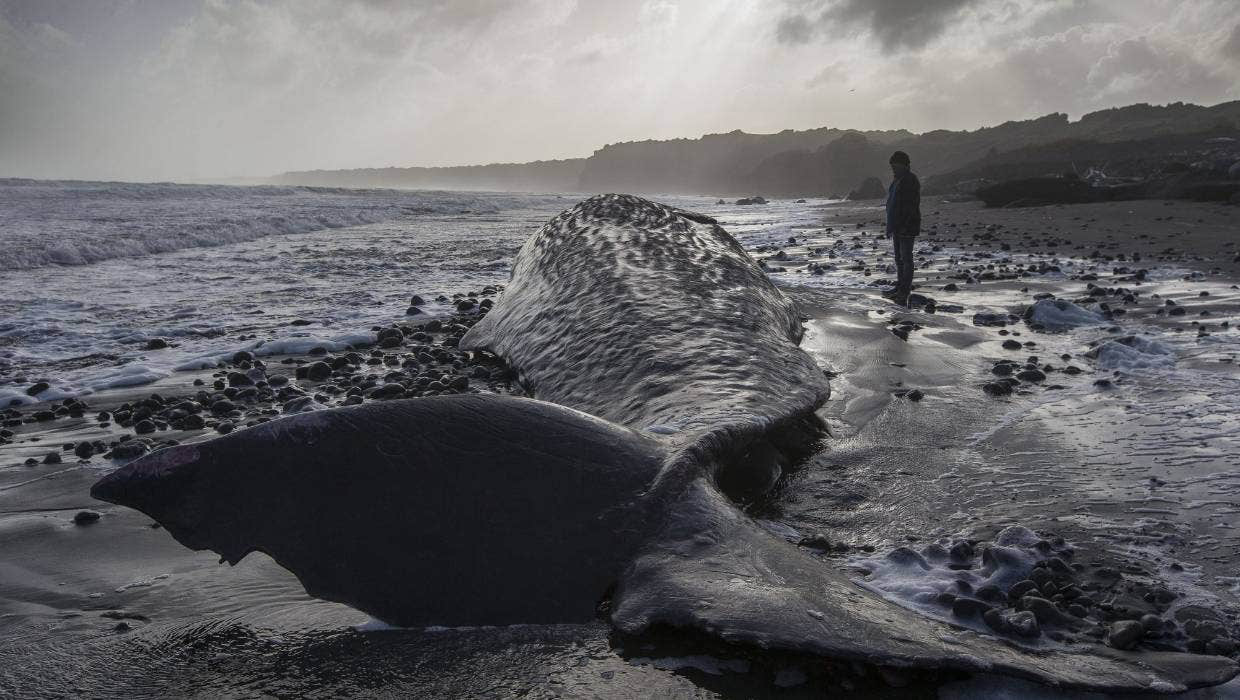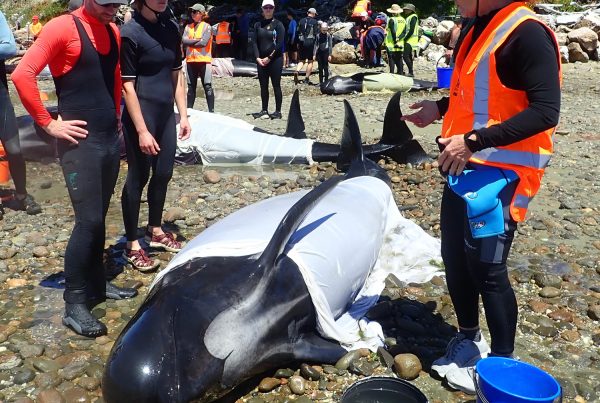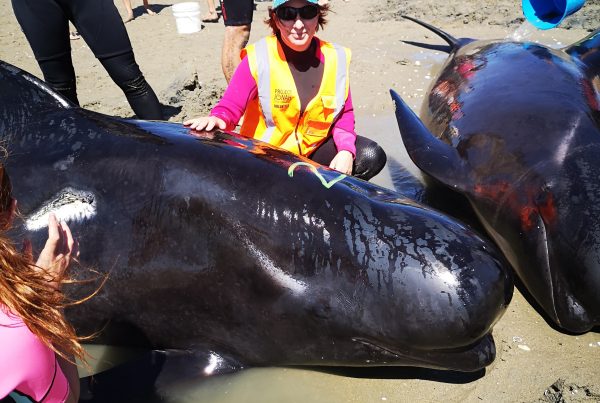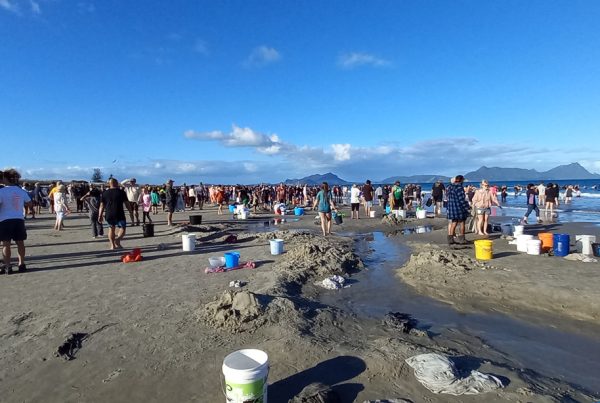
Massey University researchers have analysed skin and blubber samples of 14 male sperm whales that stranded in 2018. These whales all stranded within a month of each other at 2 sites, Taranaki (13) and Marlborough (1).
To find out how genetically similar the whales were to other sperm whale populations, they analysed mitochondrial DNA and found that the male sperm whales had genetic links to other areas of the Southwest Pacific.
They also looked at carbon and nitrogen stable isotopes to find out where the whales had been feeding and at what level in the food web. Results showed that despite their close stranding proximity these whales most likely originated from separate groups and were feeding in different areas and/or prey.
Additional analysis of New Zealand stranding records also found that single stranding events of sperm whales most often occur in the summer months but that there was no clear seasonality for mass strandings. The majority of female strandings were north of 42°S latitude (Marlborough/Nelson) which fits the previous knowledge that female sperm whales are generally found in the lower latitudes.
Photo: Grant Matthew/Stuff


